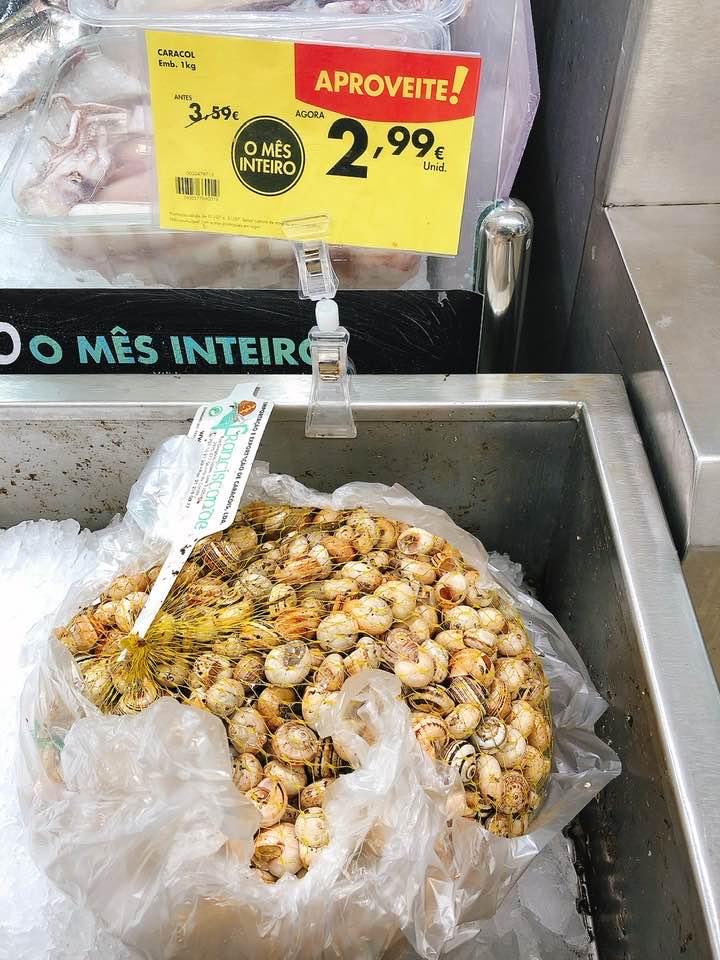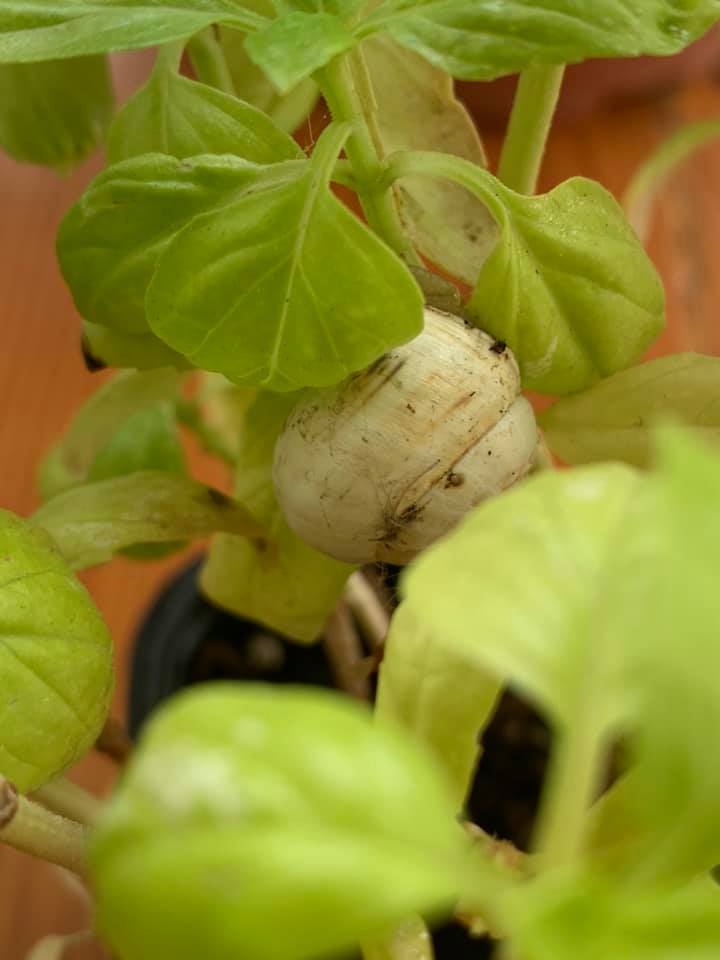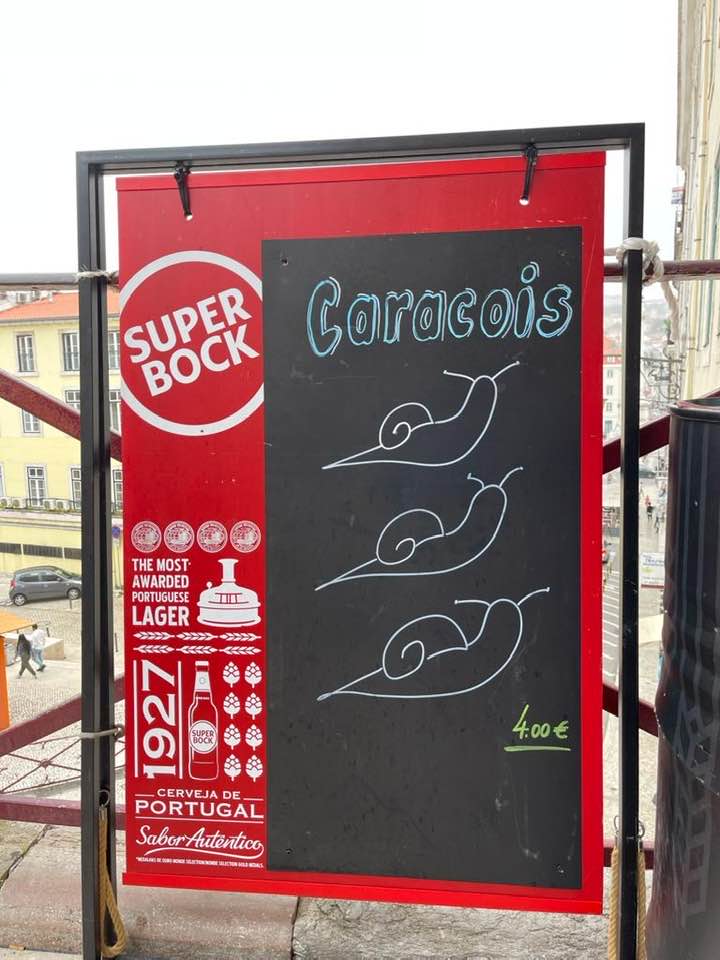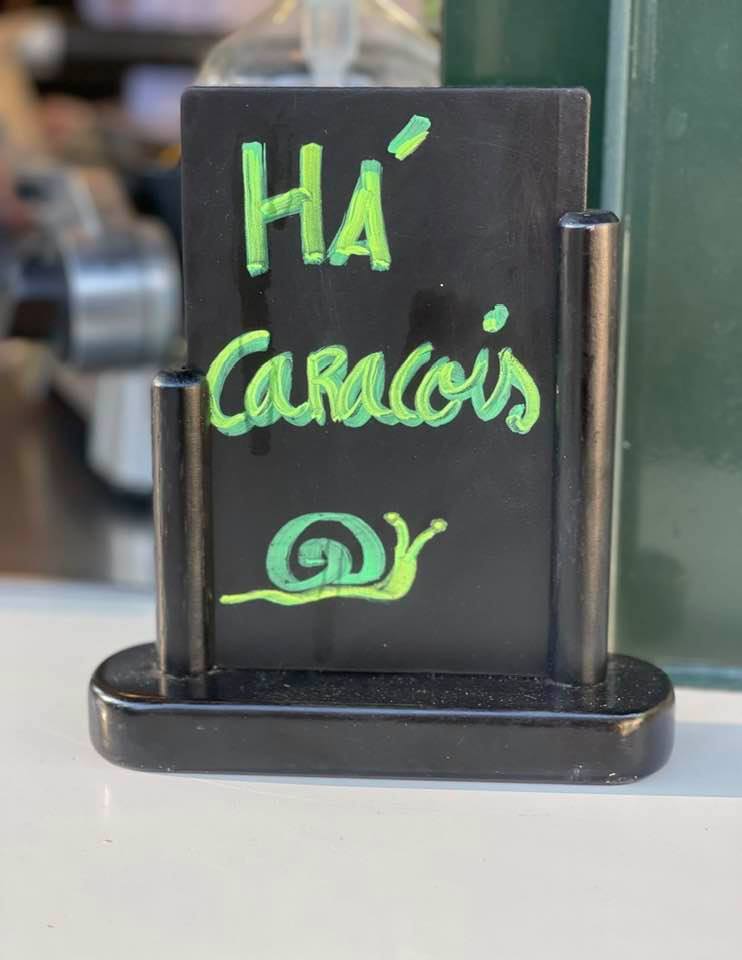Summer in Portugal is the time to eat Sardinhas Grelhadas (grilled sardines) and Caracóis (Portuguese snails). While the sardine season starts right around June – before the famous Santo António Festival, the Há Caracóis (Have snails) sign pops up in most restaurants/tascas shortly after the Easter holiday.
Sardines are best cooked on a flaming grill. Devoid of that, you’re better off ordering at a restaurant. I’ve tried the panfried version, it was not the same.
Snails on the other hand, can be cooked at home.
Live snails can be found at Pingo Doce for as low as €2.99 per kilo. Even though they look sluggish in a mesh bag

10 minutes in the water, they would be on their “escape to victory”.
Looking at them sliding and swaying with their little antenas, slimes all over the surface (yikes), I wasn’t sure I want to cook them. But…where can I safely dispose hundreds of snails in a city and not cause disturbances in the eco-system?
I sucked it up and braved this traditional Portuguese dish.
This receipe is adopted from Everybody loves Portugal by Marianne Hoesen.
Ingredients:
- 500 grams of fresh caracóis snails
- Salt & vinegar, for washing the snails
- 1 lemon peel
- 1 stalk of dried oregano (such as this)
- 1 stalk of rosemary or thyme
- 1 piri piri pepper
- 5 cloves of garlic
- salt, at the end
Instructions:
- Soak the snails in cold water with a little bit of salt and vinegar.
- When the water turns cloudy and white, drain the water and repeat step 1, keep washing until the water becomes clear (about 5 times). Keep the lid covered or you will end up with the little ones all over your kitchen. They can move strikingly fast when they want.
- Discard any snails in closed shells.
- Place the clean snails in a tall pot filled with water just covering the snails, add the lemon peel, oregano, rosemary or thyme, piri piri pepper and garlic.
- Cook the snails on medium heat uncovered for about 20 minutes, skim off the foam on top.
- At the end of the cooking, turn off the heat, season with salt and let it cool.
- Serve cold in the aromatic broth. Best paired with a glass or white wine or cold beer for the more authentic experience.

Note: Two weeks after I cooked the snails, I opened the frige and found a single snail hanging onto the shelf. I picked him off and left him outside on my balcony which connects to the garden below. That was July 11th. This past Saturday, exactly two months after the release, I was on a call and noticed him climbing back to my balcony. He looked a bit beaten up, I tried to feed him with lettuce, which he didn’t seem to like. So I just put him in the pot of my basil plant then there he was, little head out, swaying his antenas left and right, until I touched the leaves around him. Now he’s back in the shell. I have to keep an close eye on him so he’s not running all over the house.

Coming up next: Queluz National Palace, Sintra



I have now taken a personal interest in this little snail. He’s a survivor!
LikeLiked by 1 person
Yes he definitely is. After hanging on to my basil plant and ate some to regain his strength, he took off this morning. I left the pot outside after the sun went down. I checked all over the balcony this morning and didn’t see him. I think he’s off to a good life 🙂
LikeLiked by 1 person
😃
LikeLiked by 1 person
I usually leave snails alone if they’re outside, and I’ve eaten my fair share of snails in France, but to cook them or even take care of them is a whole other thing in itself! I don’t think I’ll be trying to cook any snails anytime soon, but I’m impressed with your skill and to even let one of them live!
LikeLiked by 1 person
Well, I’ve just learned my lesson in that. Don’t think I will cook them again after seeing them alive 😦
LikeLiked by 1 person
Oh my gosh, poor little guy. Amazing that they seem so SLOW, but can move FAST if they have to, right. You have a friend, he’s GLAD he was SAVED, he’ll be BACK!
LikeLiked by 1 person
Thanks dear. I hope he’ll live happily ever after.
LikeLiked by 1 person
Oh my! Runaway food turns pet! 😀 We have them here in thousands – I don’t know if the same kind – and they make clusters and try to survive the summer on higher ground, including on road signs and street lights, escaping the hot earth below. The summer is ending and they don’t look too good.
LikeLiked by 1 person
Same with this one, he was a little light-weighted. You are right about the heat.
LikeLiked by 1 person